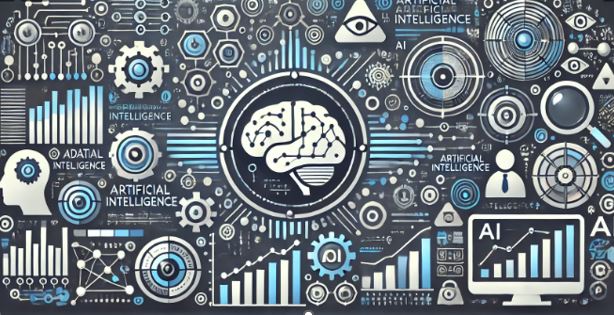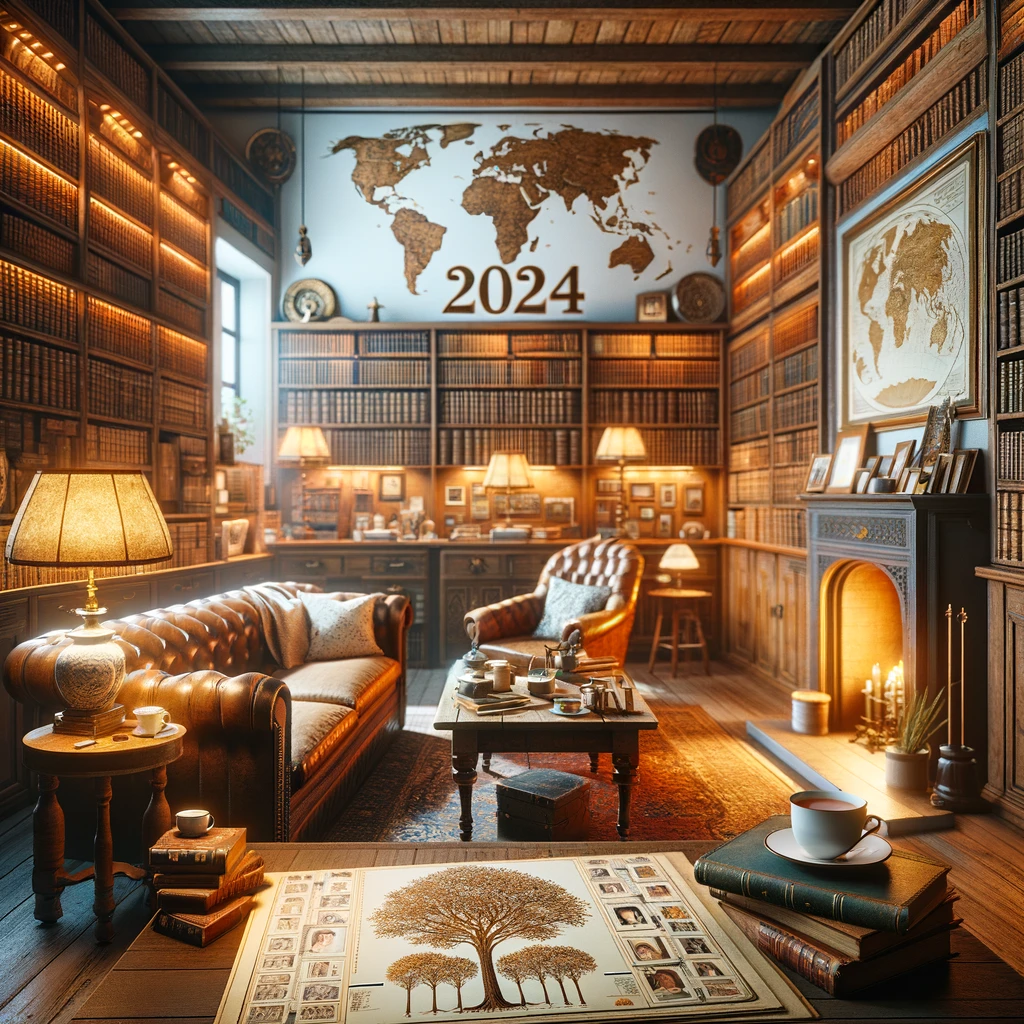
I discovered a quick and easy way to create a family history book that you need to try! Seriously, in 3 weeks, you can have a delightful book to share with family who isn't as passionate about ancestors as you are.
First thing is to throw out of your head that you can't do it. You can! You have researched for years and probably have all the info that you need. If not, it will become apparent but there's a work around for that.
Second - throw out of your head that you aren't a good writer. You don't need to be! I'm serious! You'll see why in a second.
Third - think about the state of the world and your place in it. Really! You aren't getting younger. Who will want your genealogy research? Will they be able to decipher your notes? Probably not unless you have kept everything completely organized since you began.
Fourth - throw out of your head that you don't have enough knowledge to create a genealogy book. You do! You don't need to write a book the length of War and Peace. You don't have to number your genealogy; in fact, it's probably better if you don't.
Fifth - Don't worry about the cost, as you can do this for very little money.
Now that we've got those barriers out of the way, this is what I did to create a beautiful book for my family in 3 weeks...
- Go to wherever you keep your genealogy records and pull out the most far-flung family member in the line you are interested in. I know you're thinking, huh? Why would I do that? Because we're throwing out the rules of genealogy here to get this task done. You, hopefully, researched to your ancestor. If you did that than you know that you've proven the relationships and identities of all those between you and that far out there ancestor. You are starting with the farthest away because you will have less to write about. This is just to get you going. When you've got the first one done you go on to the descendant of which is in your line.
- Next, bring up Word (see my blog on how to get rid of that annoying Copilot message). On the top line write the names of the couple you are writing about. In my example, that's Hemming Jonsson and Margareta. It's okay if you don't know a last name or their parents names.
- Look at your research and write the following (or copy and paste in you Word file):
[Insert Ancestor Name] was born [insert date] in [insert place] to [insert parents].1 He married [insert wife's name] on [insert date] at [insert place].2 She was born on [insert birth date] on [insert date] at [insert place] to [insert parents' names].3
The couple lived in [insert place] where they had the following children [insert name], (b. [insert date or year], {etc. - add all that you know.}4
[Insert one of the couple's names] died on [insert date] at [insert place.]5 [Insert other one of the couple's names] died on [insert date] at [insert place.]6 They are buried in [insert cemetery name, location].
Here's what mine looks like for Hemming Jonsson and Margareta Larsdotter:
Hemming Jonsson was born about 1655, likely in Östergötland, Sweden; his parents are unknown.[i] He married Margareta Larsdotter about 1684.[ii] She was born about 1650 at Vreta Kloster, Östergötland, Sweden; her parents are unknown.[iii]
The couple lived in Ljung, Östergötland, where they had one known child, Jon Hemmingsson (b. 1685) in Ljung.[iv]
Hemming died on 30 January 1731 at Saby, Ljung, Ostergotland.[v] Margareta died on 7 February 1731 in Saby.[vi]
[i] Sweden, Church Records, 1451-1943, Hemming Jonsson, 30 January 1731, digital image; Ancestry.com: accessed 18 January 2025, citing Ostergotland Parish, Ljung, C:1 (1694-1720), image 208, p. 313. DOB c. 1655.
[ii] Sweden, Church Records, 1451-1943, Margareta Larsdotter, 7 February 1731, digital image; Ancestry.com: accessed 18 January 2025, citing Ostergotland Parish, Ljung, C:1 (1694-1720), image 208, p. 313.
[iii] Sweden, Household Clerical Surveys, 1654-1901, Jon Hemmingsson, 1751-1760, digital image; Ancestry.com: accessed 18 January 2025, image 210 of 306. Age 66.
Death Record for John Hemmingsson, 8 June 1766, digital, image; Arkivedigital.com: accessed 10 June 2024, Vreta Kloster EF:1 (1746-1775), image 134, p. 263. DOB 1685
[iv] ibid.
[v] Sweden, Church Records, Hemming Jonsson, 30 January 173, p. 313. DOB c. 1655.
[vi] Sweden, Church Records, Margareta Larsdotter, 7 February 1731, p. 313.
NOTE: Definitely use footnotes. Why? Because your family doesn't care about the sources, but maybe someday someone will, so they will be there for future researchers. Don't you hate finding an old family genealogy with no info on where they found the dates? Don't be that person! My blog converted the numbers to letters, as in endnotes, but for my books, I use numbers.
Notice some of the info is incomplete - I don't know the parents' names or when the couple married. That's okay. Further research is always available, but if you are so far back, the probability of you finding more records does diminish. In the area where the Jonssons lived, they go back in some parishes to 1555, so maybe I'll find their parents' names someday. Don't let that stop you from writing this now.
4. Yes, the article is terribly dull, so boring that your family will cringe. That's just the info that you need to get going. Now, don't tell me you can't jazz this up to make it entertaining because you will take that info and copy it into your favorite AI. I used ChatGPT. Here was my prompt: Please keep dates in military style and make this more engaging.
Here is what it turned that piece into:
Hemming Jonsson was born around 1655, likely in Östergötland, Sweden. Details about his parents remain a mystery. Around 1684, he married Margareta Larsdotter, who was born circa 1650 in Vreta Kloster, Östergötland. Like Hemming, her parentage is also unknown.
The couple made their home in Ljung, Östergötland, where they welcomed their only known child, Jon Hemmingsson, born in 1685.
Hemming lived to the remarkable age of 76, passing away on 30 January 1731 at Säby, Ljung, Östergötland. Margareta followed him in death just days later, on 7 February 1731, also at Säby.
Their lives, though largely enigmatic, are rooted in the rich history of 17th-century Sweden. Hemming and Margareta's brief legacy echoes in their son Jon, a solitary thread in the tapestry of Östergötland's past.
Your family will be interested in that! It took me about 10 minutes from start to finish. I did not show you the footnotes on the revised article to save space. All you'll need to do is copy and paste the article back into Word and realign the footnotes. You will probably make some adjustments. Take out what you know isn't a fact, AI likes to write about someone being born on a hot summer day. It didn't know if it was hot! Add anything you'd like, perhaps I could end with, "The lives of our farthest flung ancestors," or if you are writing for a particular generation, like your grandchildren, "The couple were your 7th generation grandparents."
The beauty of this is that if you are writing place names that use diacritical marks, you don't even need to add them; ChatGPT will do that for you.
I've added photos I took of some of the ancestors' homes, churches, and work sites. A local enthusiast told me it makes it a graphic novel - hey, why not? For those who don't like to read, the pics will make the story more entertaining.
5. I include a short pedigree chart at the bottom of the article, highlighting the line that will be followed. Sure, you could number, but that confused my family, so I went with the graphic. Here's the chart I'd include for Hemming Jonsson:

I include 4 generations so the reader can see where they are going and what they'll read next. I like foreshadowing. It is also nice to go from the 1600s to the 1800s in just four simple steps. Highlight the individuals that will be traced in the lineage. When I get to Nils Jonsson, I'll delete Hemming and Margareta and add the children of Torsten and Brita.
If you know the names of other children, include them on the chart under their parents. I also include married names for females. I'm not going to be writing about all of the family in depth, just the ones that are of direct lineage. Why? Because I don't have time for that, and my family doesn't care. I have the info in my tree if it was needed, as sometimes we must pull from a sibling or other relative in the sketch - like grandma lived with Uncle Jake in 1880, so you'll source that census. It's important to research thoroughly, but you don't have to provide every piece of info on other relatives unless it's pertinent.
When you're done, make a Table of Contents, add a page number, and an index. Write a page about yourself and why you took on this project. Include a title page.
Below are links to books I published last winter so you can preview them to get an idea of what you'd like in yours. Each is different. From my travels to Sweden, I had lots of info and pictures of the homes, churches, and work sites of my husband's ancestors, but for my Croatian family, since they lived in the same location for centuries, there were only so many pictures I could include. That gave me space to add family stories that I investigated and recipes that were family favorites. My German book includes French, Swiss, and Dutch ancestors, too, since I decided to place all those who emigrated for religious reasons in one volume. I'm working on our British ancestors, my last book, but won't finish it until next winter. Do you have a collection of family letters? Then by all means, digitize, transcribe, and then have it printed.
Next week, I'll be blogging about how to set up Word so you can upload the book to get it published. The following week, I'll blog about some options you have in publishing and what I chose.
Then, pat yourself on the back because you did it! You are now an author, historian, and an awesome person who got your research out there. Good for you!















